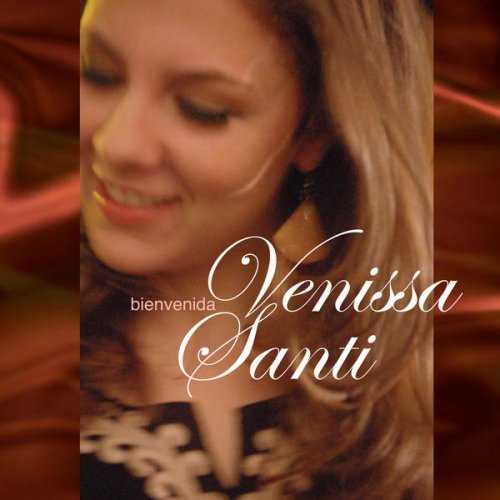Roberta Invernizzi, La Risonanza, Fabio Bonizzoni - Handel: Italian Cantatas, Volume 1 (2006)

Artist: Roberta Invernizzi, La Risonanza, Fabio Bonizzoni
Title: Handel: Italian Cantatas, Volume 1
Year Of Release: 2006
Label: Glossa
Genre: Classical
Quality: FLAC (tracks)
Total Time: 01:06:01
Total Size: 357 Mb
WebSite: Album Preview
Tracklist: Title: Handel: Italian Cantatas, Volume 1
Year Of Release: 2006
Label: Glossa
Genre: Classical
Quality: FLAC (tracks)
Total Time: 01:06:01
Total Size: 357 Mb
WebSite: Album Preview
01. Tra le fiamme, HWV 170: Aria - 00:05:13
02. Recitative: Dedalo gia le fortunate penne - 00:00:41
03. Aria: Pien di nuovo e bel diletto - 00:04:45
04. Recitative: Si, si, pur troppo e vero - 00:00:15
05. Aria: Voli per l'aria - 00:02:45
06. Recitative: L'uomo, che nacque per salire - 00:00:20
07. Tra le fiamme, HWV 170: Aria - 00:02:16
08. Nel dolce dell'oblio, HWV 134, "Pensieri notturni di Filli": Recitative - 00:00:33
09. Aria: Giacche sonno a lei dipinge - 00:03:05
10. Recitative: Cosi fida ella vive - 00:00:20
11. Aria: Ha l'inganno - 00:02:27
12. Sonata - 00:04:24
13. Da quel giorno fatale, HWV 99, "Il delirio amoroso": Recitative - 00:00:56
14. Aria: Un pensiero voli in ciel - 00:08:53
15. Recitative: Ma fermati - 00:01:04
16. Aria: Per te lasciai la luce - 00:06:38
17. Recitative: Non ti bastava ingrato - 00:00:52
18. Aria: Lascia omai le brune vele - 00:05:02
19. Recitative: Ma siamo giunti in Lete - 00:00:17
20. Entree - 00:01:51
21. Arietta: In queste amene - 00:01:58
22. Recitative and Minuet: Si, disse Clori - 00:00:57
23. Figlio d'alte speranze, HWV 113: Recitative - 00:00:36
24. Aria: Troppo costa - 00:03:17
25. Recitative: Era conforto il suo penar - 00:00:23
26. Aria: Sia guida, sia stella - 00:03:25
27. Recitative: In cosi dire - 00:00:16
28. Aria: Brillava protetto - 00:02:32
Performers:
Roberta Invernizzi (soprano)
La Risonanza
Fabio Bonizzoni (harpsichord/director)
Not all of these solo cantatas for soprano were written "for Cardinal Pamphili," as the cover states; two were written for some other unknown Italian patron. But all date from early in Handel's career, when he was living in Italy. The picture that emerges from the detailed, informative notes by Ellen T. Harris is of a young composer working in private, chamber genres rather than the highly public ones of opera and oratorio that would form the basis of Handel's career in England. All of Handel's solo secular cantatas date from before his move to London, and they have been largely neglected. It's hard to say why, for they are extremely compelling pieces. It may be because few singers specialize in this type of material -- the cantatas are highly virtuosic but small in scale, which makes them all the more difficult for the singer. (Bach's church cantatas are similar in scale in many cases but require a different kind of intimacy.) Sample track 9, the aria Giacché il sonno a lei dipinge (As the sun draws for her), from the cantata Pensieri notturni di Fili (Phyllis' Thoughts at Night), for a taste of the distinctive qualities of the music and the performance here. Despite the unfamiliar genre, there are many Handelian trademarks in the music -- here he builds a complex, highly ornamented, perfectly balanced structure out of the seemingly lightweight jig rhythm. The soprano has a lot to do, and she has to do it in a quiet voice. Two of the cantatas, Tra le fiamme (Among the Flames) and Il delirio amoroso (The Ecstasy of Love), have a richer, more varied scoring that allows soprano Roberta Invernizzi to stretch out a bit more, and here the talents of the orchestra La Risonanza and conductor Fabio Bonizzoni come into play; the group is supple and precise, with an extremely agile pair of recorder players. Hear also the instrumental "sonata" that opens Il delirio amoroso: the group captures the timing in Handel's motoric passages without ever lapsing into a mechanical feel. This is one of a group of recordings of Handel's Italian-language cantatas that have been released by this group of performers, and all of them should help elevate these pieces to the level of standard vocal repertory items. They are especially recommended to young sopranos, for they are of ideal dimensions for vocal recitals.




![Afrodream - Guiss Guiss (2025) [Hi-Res] Afrodream - Guiss Guiss (2025) [Hi-Res]](https://www.dibpic.com/uploads/posts/2025-12/1765638325_a2717494732_0.jpg)
![RAS - Rød i Blå (2025) [Hi-Res] RAS - Rød i Blå (2025) [Hi-Res]](https://www.dibpic.com/uploads/posts/2025-12/1765847447_s09xuo23tcu1a_600.jpg)


